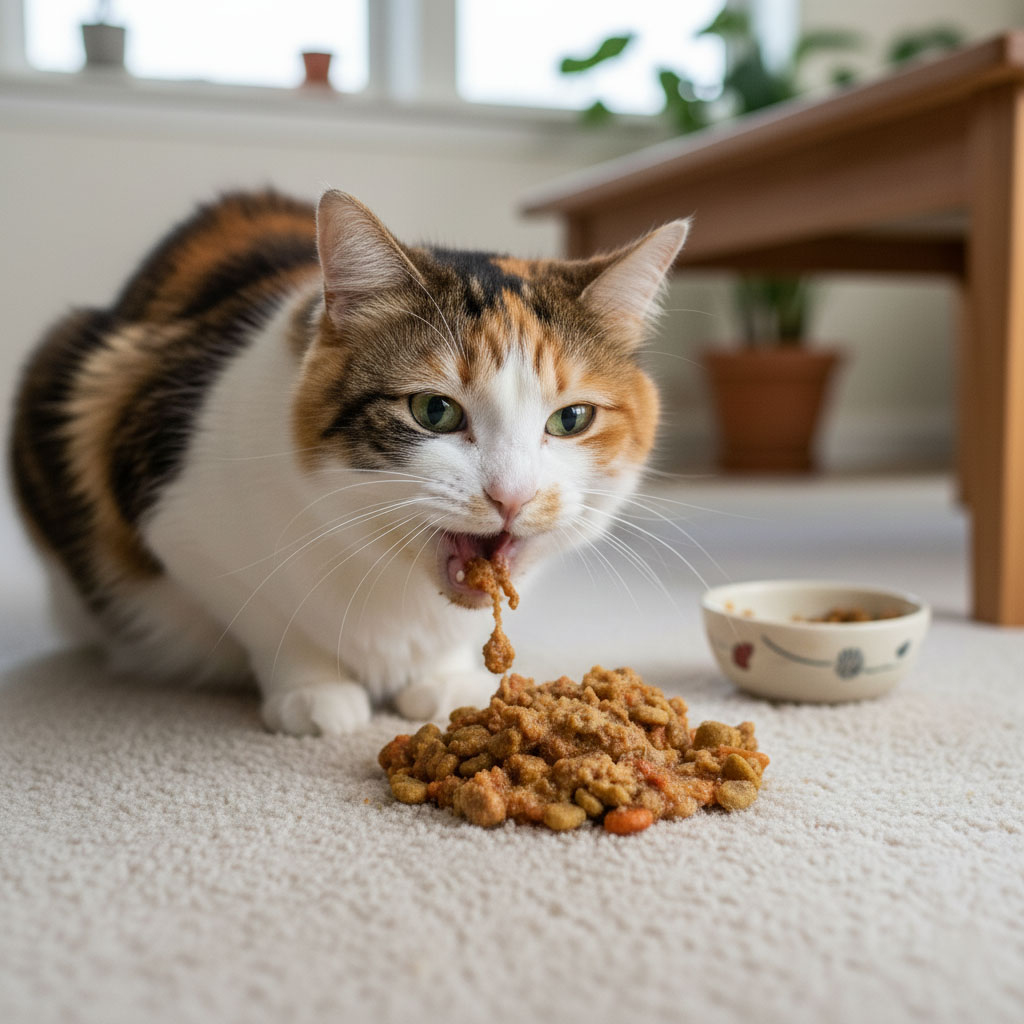My Cat is Vomiting: Is It Just a Hairball or an Emergency?
The sound of a cat about to vomit is unmistakable, and it’s one that sends most owners running—usually for a paper towel. It’s a common occurrence in the life of a cat owner, so it’s easy to become desensitized and dismiss it as “just a hairball.”
While occasional hairballs can be normal, frequent or severe vomiting is a sign that something more serious is going on. The key is knowing how to tell the difference. Your cat can’t tell you how they’re feeling, so it’s up to you to analyze the evidence. Before you panic, take a calm, methodical approach to assess the situation.
Here are four key factors to consider when your cat is vomiting.
1. The Frequency: One-Off or Chronic?
This is the most important initial question. A single episode of vomiting where your cat seems perfectly fine afterward is generally less concerning than repeated episodes.
- When it’s less concerning: A one-time vomit that produces a hairball, followed by your cat immediately returning to their normal, happy self.
- When to call the vet: Multiple vomiting episodes in a 24-hour period, or a pattern of vomiting several times a week. This is considered chronic and points to an underlying issue.
2. The Content: What’s in the Vomit?
While it’s not a pleasant task, examining the vomit can provide crucial clues for you and your vet.
- Hairball: This is usually a tube-shaped mass of hair, often mixed with a little bile or food.
- Undigested Food: If you see whole kibble, it may mean your cat is eating too fast.
- Bile/Foam: Yellow or white foam on an empty stomach can indicate acid reflux or other gastrointestinal issues.
- Foreign Objects: If you see pieces of a plant, string, or plastic, it’s a major red flag for a potential blockage.
- Blood: Red-tinged or “coffee ground” looking vomit is an emergency and requires an immediate vet visit.
3. Accompanying Symptoms: How Are They Acting?
A cat’s overall behavior is a critical piece of the puzzle. A cat who vomits and then goes back to playing is very different from a cat who vomits and then hides.
- Look for these red flags: Is the vomiting paired with lethargy (unusual tiredness), a refusal to eat or drink, diarrhea, or signs of pain (hiding, meowing strangely)?
- Why it matters: When vomiting is accompanied by other signs of illness, it’s a strong indicator that it’s not “just a hairball.” It points to a systemic issue that needs a vet’s attention.
4. The Timing: When Is It Happening?
Noting when the vomiting occurs can help pinpoint the cause.
- Right after eating: This could suggest eating too fast, a food allergy, or an esophageal issue.
- On an empty stomach (early morning): This is often linked to bilious vomiting syndrome, where bile irritates the stomach lining.
- Randomly: Unpredictable vomiting can be a sign of many things, from metabolic disease to a foreign body.
From Confusion to Clarity
When you’re worried, all these details can become a blur. Was it three times yesterday? Was there food in it this morning? This is where a clear log becomes your most powerful tool.
iKnowMyCat was designed to bring clarity to these chaotic situations.
Log each vomiting incident in seconds, noting the time, content (with photos), and any other symptoms you observe. The app creates a clear, organized timeline that you can share directly with your vet, giving them the precise data needed to make a fast, accurate diagnosis.
Download iKnowMyCat from the App Store and Google Play today.
*Disclaimer: This guide is for informational purposes only and is not a substitute for professional veterinary advice. Always consult your veterinarian with any health concerns.

